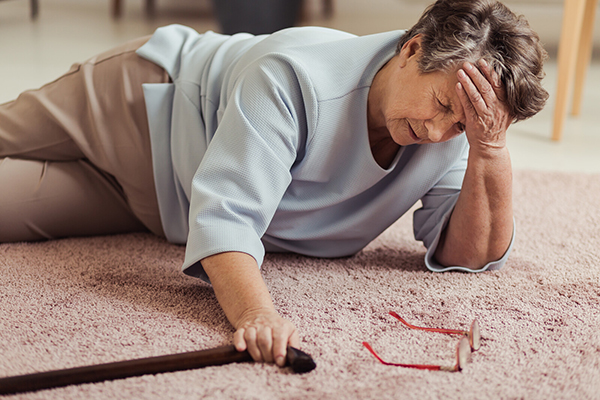Look for Tripping Hazards in the Home
Author: Sherry Farney
Falls are the second leading cause of unintentional injury deaths worldwide, according to the World Health Organization. Adults older than 60 years of age suffer the greatest number of fatal falls, and 37.3 million falls are severe enough to require medical attention each year.
Many things can cause a fall. The National Institute on Aging states that factors such as our eyesight, hearing, and reflexes might not be as sharp as they were when we were younger and contribute to falls. Diabetes, heart disease, or problems with the thyroid, nerves, feet, or blood vessels can all affect a person’s balance. Some medicines can cause dizziness or sleepiness, making someone more likely to fall. Other causes include safety hazards in the home or community environment.

According to Occupational Health and Safety, there are four types of slips, trips, and falls. The first type is the trip and fall. This type of fall occurs when a person unknowingly encounters a foreign object, like a child’s toy, in their path. The second type is stump and fall which happens when we encounter an unseen impediment or obstruction, like a bump in a rug, on the walking surface . The third category of falls is step and fall, which occurs when the surface a person is walking on unexpectedly changes surface height. The last and most common type of fall is the slip and fall. It occurs when the center of gravity is disrupted and a victim loses secure foot contact with the floor.
“There are many ways to reduce the risks of falling at home,” said Ahmed Baig, Director of Outpatient Physical Therapy at McLaren Flint. “In entries and stairways, install handrails, keep walkways clear, apply non-skid materials to steps, and place a chair by the entrance of your home for rest or to remove shoes.
“Throughout the home, keep walkways clear of obstacles, keep areas well lit, remove throw rugs, make sure carpets and flooring are adhered well and lay smooth, keep commonly used items within reach, have light switches easily accessible, and wear supportive shoes with non-skid soles.”
If you do have difficulty walking or find that you are losing your balance more easily, there are ways to help. McLaren Flint offers physical therapy for balance as well as vestibular rehabilitation to aid in restoring your balance and work to reduce the risk of falling. A primary care physician, can refer you to McLaren Flint’s Outpatient Physical Therapy Program for treatment.